Top Rankings
Deer Park Independent School District ranks among the top 20% of public school district in Texas for:
Category
Attribute
Math Proficiency
Highest math proficiency (Top 20%)
Science Proficiency
Highest science proficiency (Top 20%)
Community Size
Largest student body (number of students) (Top 1%)
For the 2025 school year, there are 2 public preschools serving 884 students in Deer Park Independent School District.
Public Preschools in Deer Park Independent School District have a diversity score of 0.28, which is less than the Texas public preschool average of 0.63.
Minority enrollment is 91% of the student body (majority Hispanic), which is more than the Texas public preschool average of 76% (majority Hispanic).
Overview
This School District
This State (TX)
# Schools
14 Schools
4,192 Schools
# Students
12,122 Students
2,151,418 Students
# Teachers
820 Teachers
147,942 Teachers
Student : Teacher Ratio
15:1
15:1
District Rank
Deer Park Independent School District, which is ranked #281 of all 1,196 school districts in Texas (based off of combined math and reading proficiency testing data) for the 2021-2022 school year.
The school district's graduation rate of 91% has increased from 89% over five school years.
Overall District Rank
#250 out of 1204 school districts
(Top 30%)
(Top 30%)
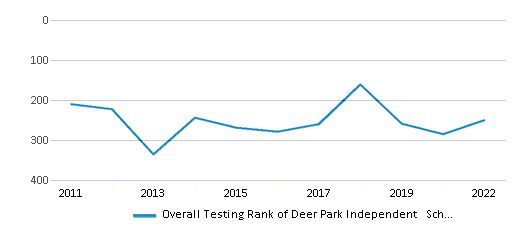
Math Test Scores (% Proficient)
54%
41%
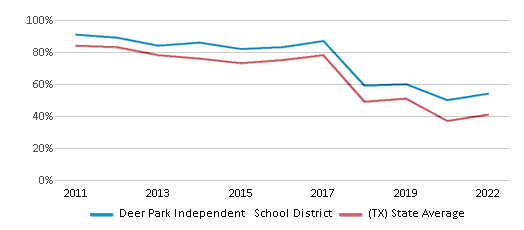
Reading/Language Arts Test Scores (% Proficient)
57%
51%
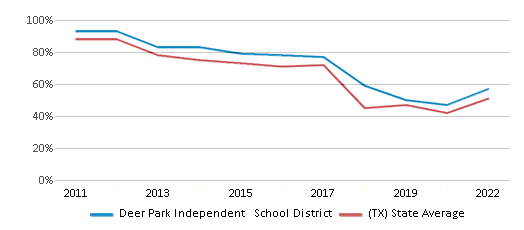
Science Test Scores (% Proficient)
61%
46%
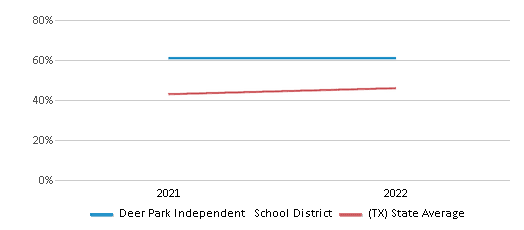
Graduation Rate
91%
90%
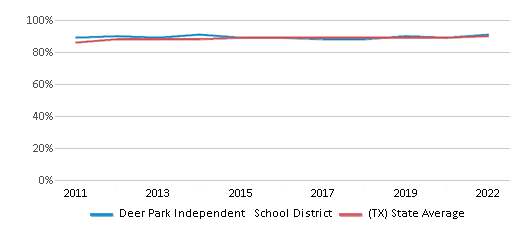
Students by Ethnicity:
Diversity Score
0.51
0.63
# American Indian Students
17 Students
6,302 Students
% American Indian Students
n/a
n/a
# Asian Students
119 Students
104,203 Students
% Asian Students
1%
5%
# Hispanic Students
7,608 Students
1,180,208 Students
% Hispanic Students
63%
55%
# Black Students
325 Students
275,255 Students
% Black Students
3%
13%
# White Students
3,799 Students
509,082 Students
% White Students
31%
24%
# Hawaiian Students
1 Student
3,291 Students
% Hawaiian Students
n/a
n/a
# Two or more races Students
253 Students
73,077 Students
% of Two or more races Students
2%
3%
Students by Grade:
# Students in PK Grade:
340
275,832
# Students in K Grade:
729
307,607
# Students in 1st Grade:
746
310,480
# Students in 2nd Grade:
830
317,113
# Students in 3rd Grade:
869
300,451
# Students in 4th Grade:
828
295,281
# Students in 5th Grade:
877
258,890
# Students in 6th Grade:
869
33,806
# Students in 7th Grade:
1,000
14,241
# Students in 8th Grade:
966
12,959
# Students in 9th Grade:
1,075
7,002
# Students in 10th Grade:
1,104
6,366
# Students in 11th Grade:
962
5,781
# Students in 12th Grade:
927
5,609
# Ungraded Students:
-
-
District Revenue and Spending
The revenue/student of $15,635 is higher than the state median of $13,387. The school district revenue/student has stayed relatively flat over four school years.
The school district's spending/student of $15,580 is higher than the state median of $14,116. The school district spending/student has stayed relatively flat over four school years.
Total Revenue
$190 MM
$74,029 MM
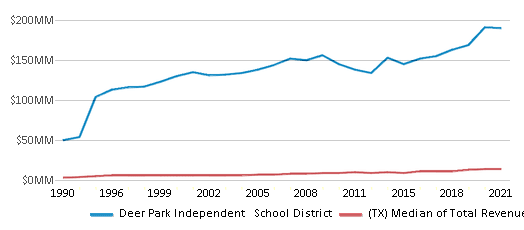
Spending
$189 MM
$78,063 MM
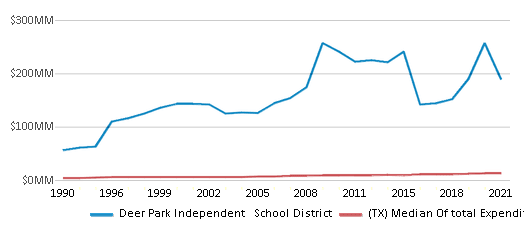
Revenue / Student
$15,635
$13,387
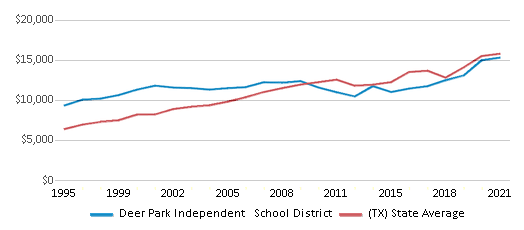
Spending / Student
$15,580
$14,116
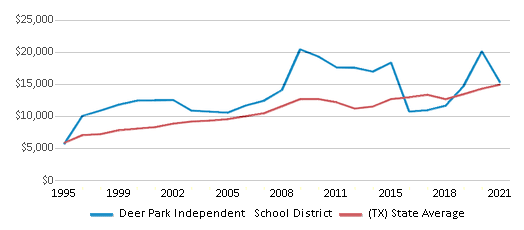
Best Deer Park Independent School District Public Preschools (2025)
School
(Math and Reading Proficiency)
(Math and Reading Proficiency)
Location
Grades
Students
Rank: n/an/a
401 Glenmore
Pasadena, TX 77503
(832) 668-8390
Pasadena, TX 77503
(832) 668-8390
Grades: PK-K
| 273 students
Rank: n/an/a
404 Parkwood
Pasadena, TX 77503
(832) 668-8200
Pasadena, TX 77503
(832) 668-8200
Grades: PK-2
| 611 students
Recent Articles

Year-Round Or Traditional Schedule?
Which is more appropriate for your child? A year-round attendance schedule or traditional schedule? We look at the pros and cons.

Why You Should Encourage Your Child to Join a Sports Team
Participating in team sports has a great many benefits for children, there is no doubt. In this article you will learn what those benefits are.

White Students are Now the Minority in U.S. Public Schools
Increasing birth rates among immigrant families from Asia and Central and South America, combined with lower birth rates among white families, means that for the first time in history, public school students in the United States are majority-minority. This shift in demographics poses difficulties for schools as they work to accommodate children of varying language abilities and socio-economic backgrounds.





